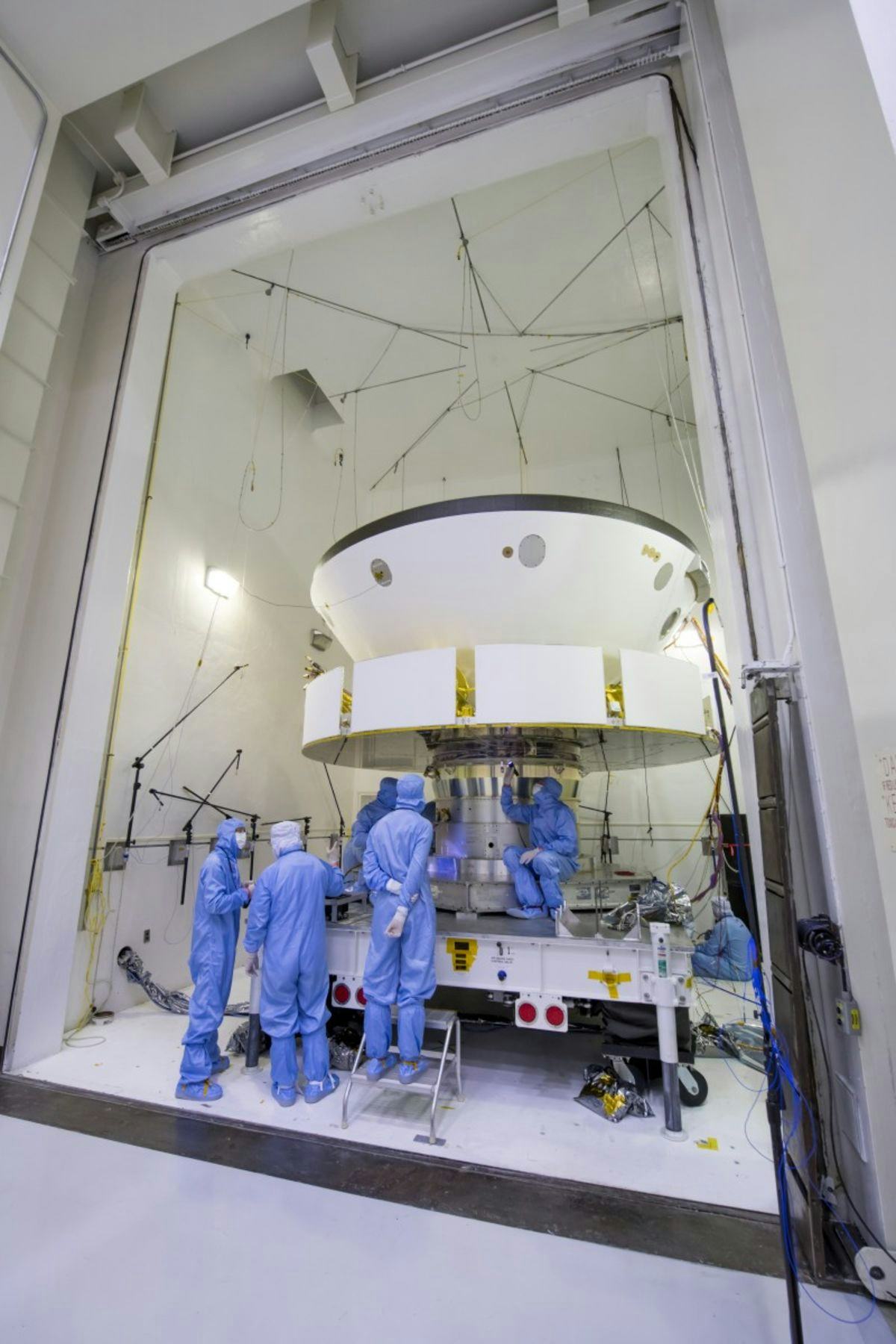How A Stevens Professor Contributed to the Landing of the Mars Rover Perseverance: A Q&A with Jason Rabinovitch
Mechanical engineering professor reflects on the human exploration of Mars
On February 18, the 2,260-pound Mars rover Perseverance landed in the Jerizo Crater on Mars to begin a mission of sampling rocks in search of signs of life on the red planet.
Assistant Professor Jason Rabinovitch, who joined Stevens' Department of Mechanical Engineering in January 2021, contributed to the engineering of this historic mission.
What has been your involvement with the February 18th landing of Perseverance inside the Jerizo Crater on Mars?
Before coming to Stevens, I worked as a mechanical engineer in the Entry, Descent, & Landing (EDL) and Formulation Group at the Jet Propulsion Laboratory (JPL) — the NASA center leading the Mars 2020 mission. While at JPL I was fortunate enough to work on a variety of aspects of the Mars 2020 mission, on a few different aspects of the project. I delivered flight hardware (the cruise stage solar array substrates and the cruise stage heat rejection system panels) to the cruise stage, which is the part of the spacecraft that helps the rover make the journey from Earth to Mars.
On the EDL side of things, I helped analyze some of the supersonic parachute inflation test data to ensure that the Mars 2020 parachute will be successful at Mars, and I also helped investigate whether or not the harsh environment during landing would damage the rover, specifically looking at whether or not the regolith particles (a blanket of particles covering solid rock) kicked up by the landing engines could damage the rover (like sandblasting).
Finally, I worked on some contamination control analysis to make sure that all of the samples that the Perseverance rover will gather will remain extremely clean, and I even worked on the Mars helicopter, Ingenuity, investigating how much of a dust cloud it will create on take-off and landing, and also developing a new low-density wind-tunnel so that we could perform aerodynamic testing of the vehicle in a relevant environment.
What are the goals at the heart of this mission? What will a successful mission look like?
The primary goal of the Mars 2020 mission is to seek signs of ancient life and collect samples of rock and regolith (broken rock and soil) for possible return to Earth. More information about the mission can be found here. I think that a successful mission would entail not only completing a lot of interesting science on the surface of Mars (a list of the different instruments and their purposes can be found here), but also preparing many samples that will hopefully be returned to Earth as part of the Mars Sample Return mission.
What is the “seven minutes of terror,” and why is it called this?
“Seven minutes of terror” is the common nickname that is given to the EDL sequence for a spacecraft on Mars. This is because it takes approximately seven minutes for a spacecraft to get from the top of the atmosphere of Mars to reach the surface, and hopefully land successfully. In only seven minutes, the spacecraft needs to decelerate from over 10,000 miles per hour, to only a few miles per hour at the surface, for a soft-landing. All of this has to be pre-programmed for the spacecraft too, as it takes about 11 minutes for a signal to reach Earth from Mars—there is no way that a human could pilot any of our rovers and help them land safely; the whole EDL sequence has to be autonomous.
In your opinion, what is the most challenging aspect of orchestrating a landing like this?
I think that there are many things that make a mission like Mars 2020 so challenging. These are incredibly complex systems, and many many things have to work together in order to land safely on Mars. Furthermore, it is really hard to test a spacecraft on Earth in an environment that entirely matches what Perseverance will experience on Mars. For example, Mars has a different atmosphere and different gravity than the Earth, and we continue to learn new things about Mars every time we send a mission there—it never ceases to surprise us.
What implications would finding signs of life on Mars have for us here on Earth?
I think that finding signs of past life on Mars would drastically change our view of the solar system, and our thoughts on how common life might be throughout the universe. We continue to discover new exoplanets that might be in the “habitable zone;” and figuring out that two planets within one solar system have supported life would likely make us think that life is much much more common throughout the universe. Also, the more we learn about how different planets evolved, and whether or not they supported life, always helps us understand the Earth more, and hopefully helps ensure that we are not on a path to turn the Earth into a place like Mars!
What is unique about the rover Perseverance?
There are many unique things about Perseverance. While a full list of the instruments can be found here, one of my favorite things that I worked on is the Mars helicopter, called Ingenuity. It is a small helicopter designed to fly on Mars, and, if successful, would demonstrate powered flight on Mars for the first time! The project is a technology demonstration, so it was able to accept a higher level of risk than normal, even though it is not contributing to the primary science goals of the mission. Flying on Mars is hard! The atmosphere is so thin that, even though gravity on Mars is only about one-third the gravity on Earth, powered flight is extremely challenging to achieve. A lot of effort was put into developing Ingenuity, and I’m excited to hopefully see it try to fly on Mars in the next few months!
What do you find exciting about human exploration of Mars?
I think it’s amazing to think about the challenges associated with space exploration, and how much we continue to learn about Earth and our solar system as we continue to explore. I think getting humans to Mars would be a huge step forward in enabling future human space exploration.
What does your experience with this bring to Stevens?
I feel extremely fortunate to have worked on such interesting and exciting projects while at JPL. I think that having worked in the aerospace industry before coming to Stevens gives me a broad understanding of the state-of-the-art (especially related to EDL) for space exploration, and it lets me focus my research on interesting fundamental topics that can help enable future space missions. My time at JPL exposed me to a variety of fascinating topics related to space and fluid mechanics, and I am excited to be able to research these subjects in greater depth at Stevens.
Are you involved in any future projects like this?
My research interests are related to space exploration and fluid mechanics, and I hope to continue to collaborate with NASA and JPL in the future. At the moment, all of my research topics are relevant to future space missions, and include modeling plume-surface interactions for landing spacecraft on other planets, modeling supersonic parachute deployments, investigating hypersonic sampling for the Cupid’s Arrow Mission Concept at Venus, and modeling the plumes on Enceladus, one of Saturn’s moons.
Learn more about mechanical engineering at Stevens:




